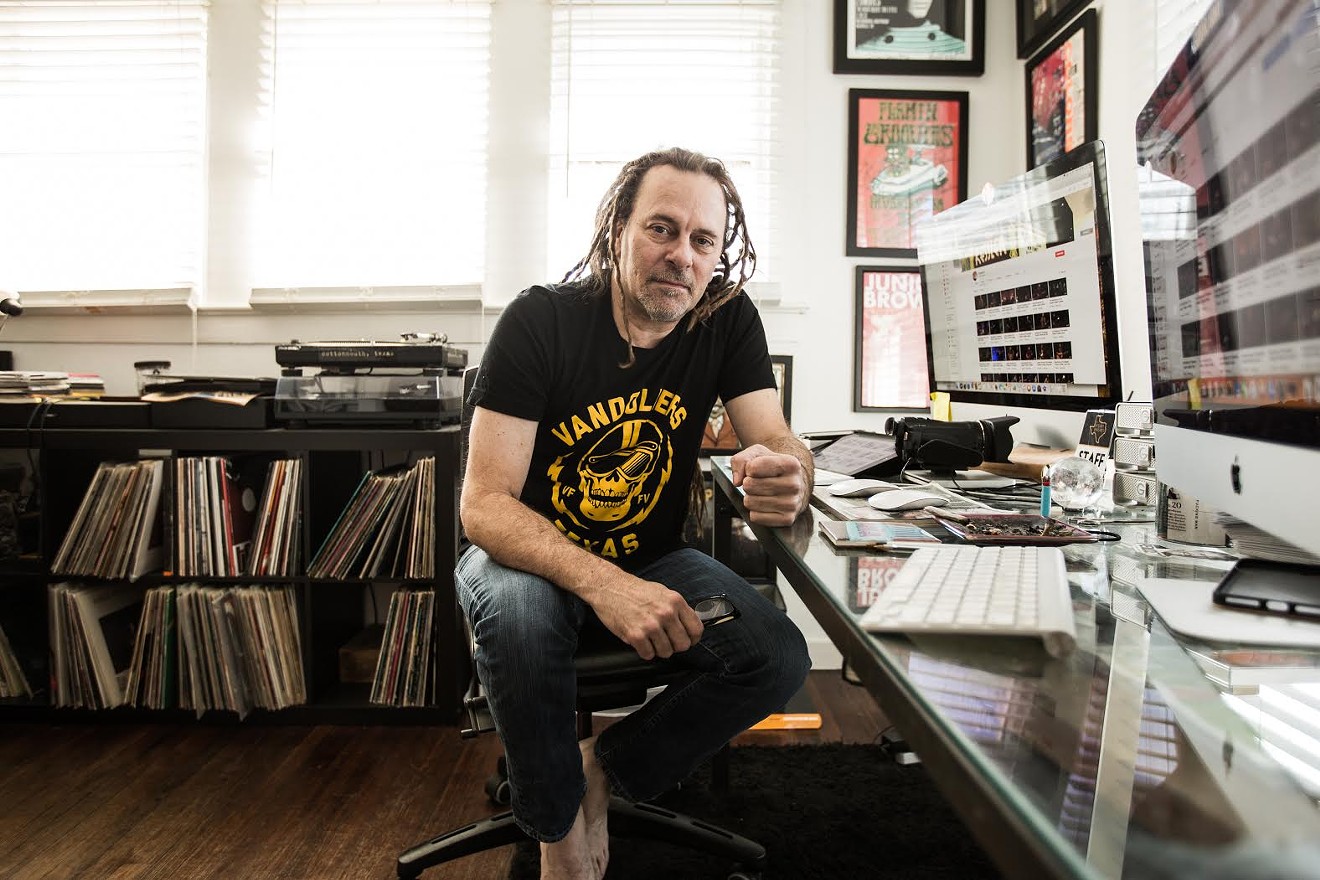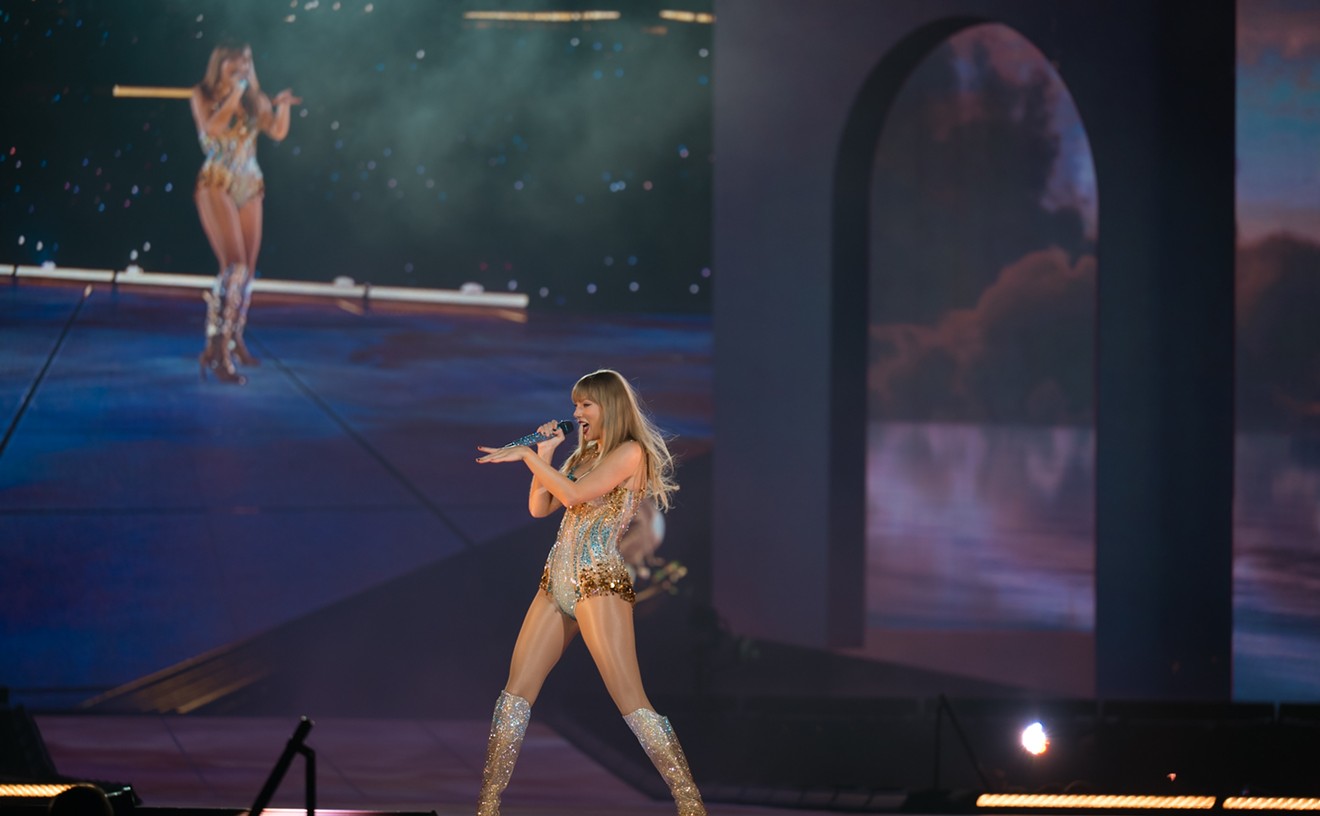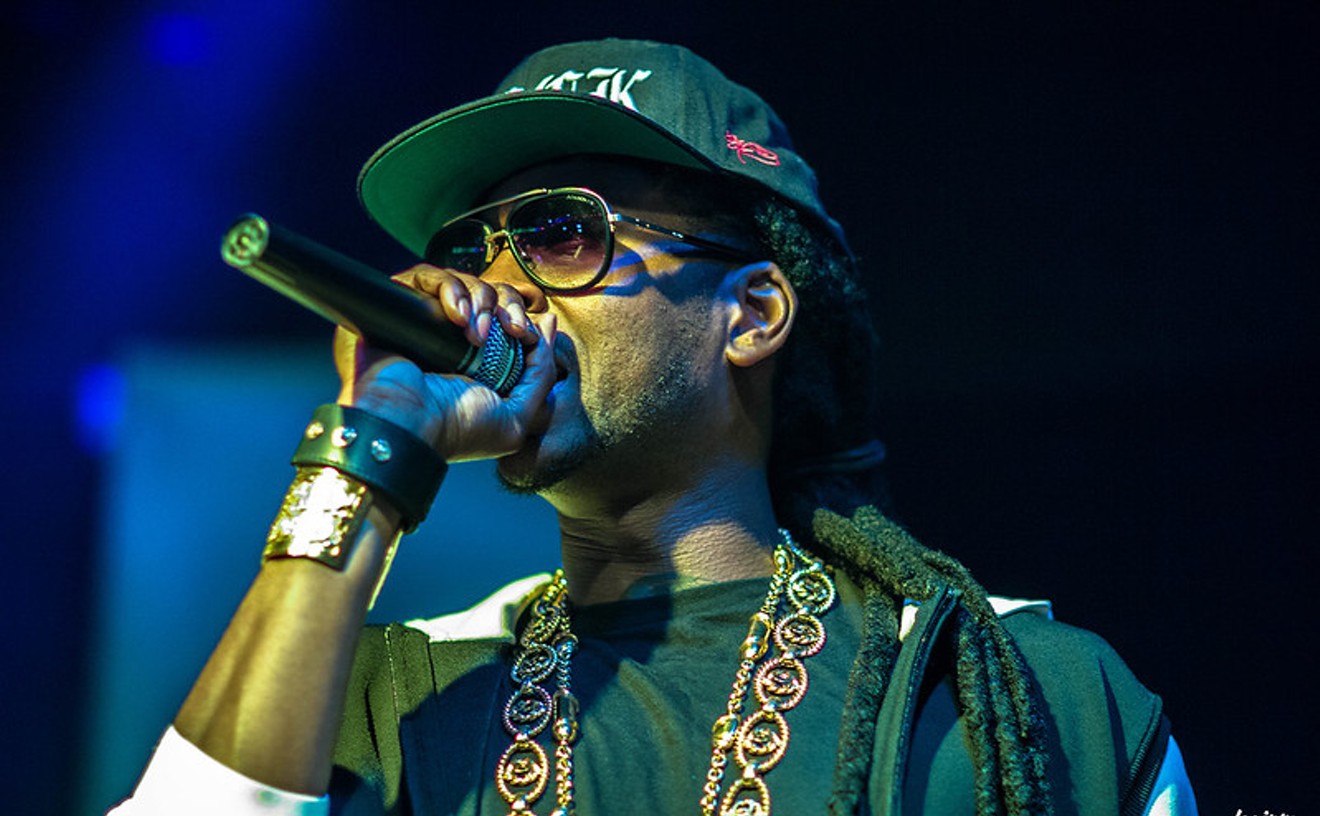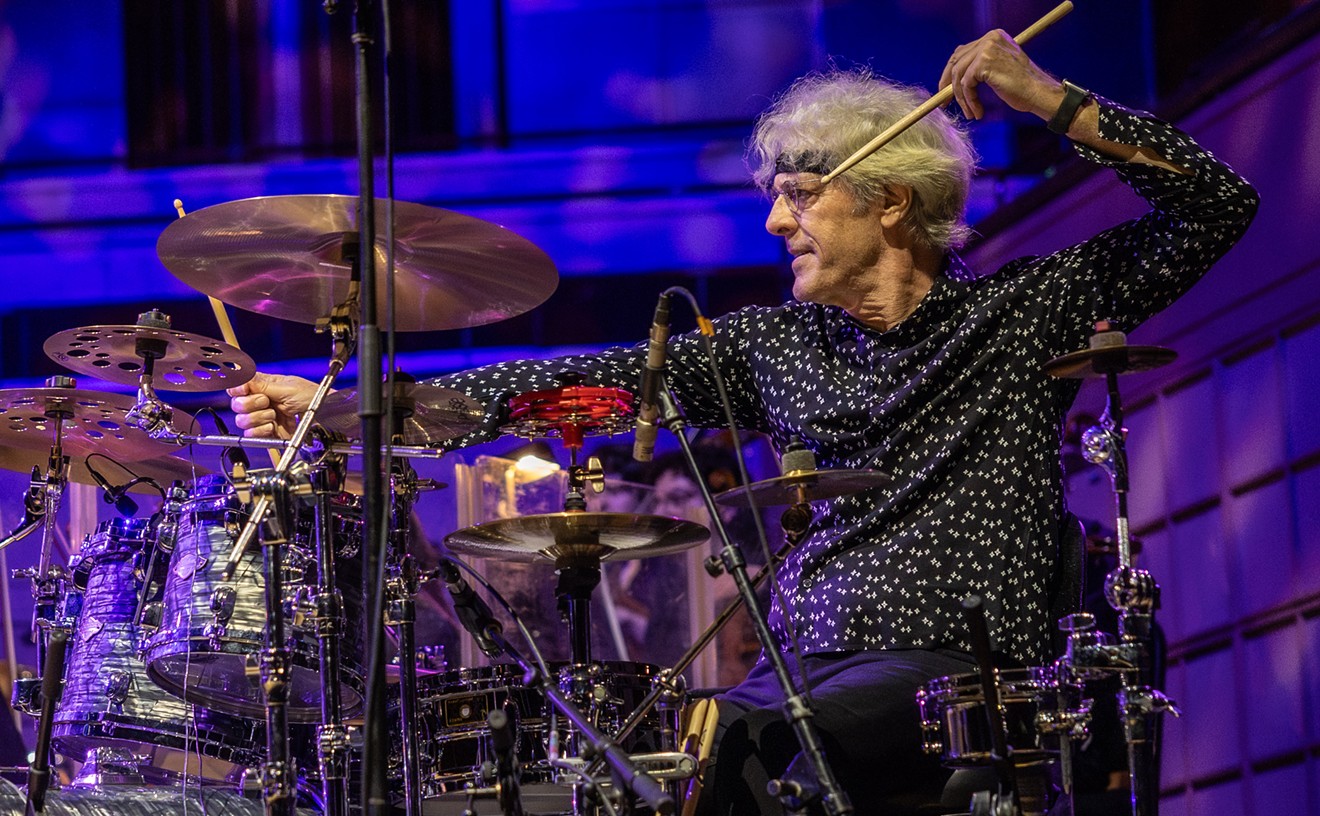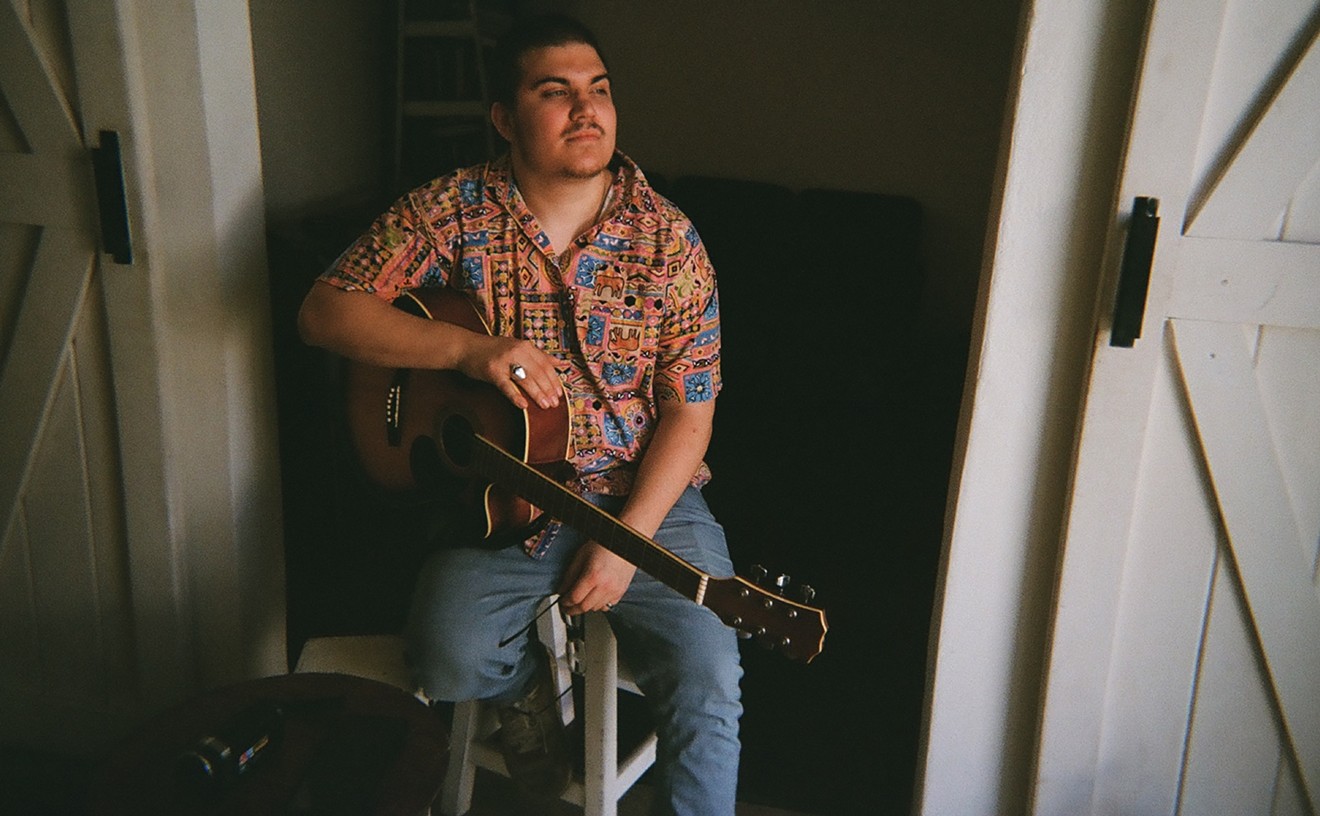“A Day in the Life …” is a series that focuses on the daily routines of prominent figures in the local music scene.Jeff Liles asks us to meet him at the Kessler Theater around 4 p.m. Friday, Nov. 17. As the Oak Cliff theater’s artistic director and talent buyer since 2008, Liles says he has a different routine earlier in the day that's less exciting than the nightlife: mostly corresponding with artists and management on upcoming shows and working out logistics with Diana Cox, director of operations for the Kessler and sister theater the Heights in Houston.
“Lots of phone calls and emails,” he writes in an email. “But things start to get going during the late afternoon when the band gets here.”
Liles, a musician, videographer and de facto music historian, is a godfather of the Dallas music scene. His band Decadent Dub Team appeared on the legendary compilation album The Sound of Deep Ellum in 1986, the first record to feature the music of Edie Brickell & the New Bohemians and Reverend Horton Heat. He hung out with Eazy-E and Dr. Dre in the late 1980s and got fired for being the first person to play N.W.A on Dallas radio. He booked Nirvana at Trees in 1991 and prevented a riot by pulling Kurt Cobain out of a broom closet.
If you’ve mingled in the Deep Ellum or Oak Cliff music circles, then you’ve probably heard at least one of these stories. Stick around long enough and you'll meet Liles, or you'll hear enough about him that you'll anticipate the meeting. I’m in the latter group, and I'm nervous.
When he walks up to greet us, he's wearing jeans and a black T-shirt with "The Replacements" in pink letters across the front, vintage Air Jordans and his signature long dreadlock. After “legendary,” perhaps the best adjective to describe Liles is “easygoing.”
He gives us a tour of the venue that doubles as a history lesson. The Kessler, in all its art deco glory, opened as a single-screen movie theater in 1942. Gene Autry bought it in 1946 and sold it a few years later.
The theater was damaged by a tornado in 1957 and a fire in 1962, and it fell into disrepair. It was resurrected in 2008 by current owner Edwin Cabaniss, who enticed Liles to return to Dallas from Los Angeles, where Liles was managing the Roxy Theater on Sunset Boulevard. Together, they oversaw the extensive renovations that led to the Kessler reopening in 2010 as a mixed-use venue for music, art and community events.
Jeff Liles records, edits and posts all of the performances at the Kessler to YouTube.
tweet this
“It’s a lot different here during the week,” Liles says. “Lots of kids running around.” Cabaniss’ wife, Lisa, is the artistic director of Sote, a dance, music and tumbling studio that operates out of the theater.
Continuing our tour, Liles points out the paintings that fill the lobby and the art gallery upstairs. The work of his friend George Holman is on display in an exhibit titled Sacred Geometry.
Upstairs, Liles takes us into the spacious green room where artists hang out and enjoy the food and beverages they requested in their riders, which Liles must approve two weeks in advance of their show dates.
Downstairs, the bands are loading in. Tonight, they’re all local and country-twinged. Pedigo’s Magic Pilsner and Jake Paleschic are opening for the Vandoliers.
As with most venues, the headliner is the first to come in and sound check, and the first opener is the last. The difference at the Kessler, Liles says, is the small, tightknit crew that artists tend to remember each time they visit. It gives the whole experience a familial coziness that larger, corporate venues tend to lack.
The Kessler’s mom-and-pop vibe extends to the free popcorn at the bar, the nicknames that staff members have for each other and the bartenders’ mutual enthusiasm for Trap Boutique, an Oak Cliff consignment shop for rare sneakers where Liles scooped up his Air Jordans for a reasonable price. The team even has a preshow ritual of tossing a football on the patch of lawn behind the venue before the guests arrive.
Under Liles’ leadership, the Kessler team’s methods are unfussy when they need to be, like forgoing a box office for a printed list of names from Prekindle — “We have the fastest entrance of any venue,” Liles says — and painstaking where it counts, like with the acoustics of the room.
Paul Quigg, the venue’s former front-of-house man and Liles’ Decadent Dub Team bandmate, mentored the current technical director, Graham Sinclair, who also runs lights. Alhough it’s an intimate room — seating 300 people and holding a maximum of 550 at standing room only — the sound is huge and finely tuned to best enhance whatever music is emanating from the stage.
“Production is No. 1,” Liles says. “If we want to hang our hat on anything, it’s that this is the best-sounding room in town.”
Liles lives around the corner from the Kessler, so when he’s not at the theater, he’s working from his home office. We hang out there for a while. He works in front of two large Macs, clicking from emails to spreadsheets to photo and video editing software. He’s surrounded by records, including his own, like Cottonmouth, Texas’ Anti-Social Butterfly and the 2017 reissue of The Sound of Deep Ellum. Framed posters and LPs signed by the artists cover the walls.
A native of North Dallas, Liles has seen Lower Greenville, Deep Ellum and Oak Cliff — particularly the intersection of Kings Highway and West Davis Street that the Kessler occupies — through several cycles.
During the 1970s and '80s, Liles says, Lower Greenville was the epicenter of popular music in Dallas. Starting in the mid-'80s, the Prohibition-era jazz district now known as Deep Ellum made a comeback by supporting original, alternative music — namely punk, grunge and hip-hop — on the local and national levels. He also fondly remembers the Bronco Bowl, a storied Oak Cliff venue that opened in 1962, closed in 2003 and counted Bob Dylan, Prince, The Smiths, REM, Bruce Springsteen and D'Angelo among its diverse performers.
In many cases, Liles' memories are tied to the memorabilia that he keeps in his sunny office space. He shows us the framed Ruthless Records 12-inch featuring “Boyz-in-the-Hood” that Eazy-E sent him after the radio incident, with a personal thank-you message from the rapper scrawled across the sleeve.
Liles also plays us some YouTube clips, including the music video for Sepultura’s “Ratamahatta," directed by Liles' late friend Fred Stuhr, and some of the videos Liles has shot over the years. These include all of the performances at the Kessler, which Liles records, edits and posts to the venue's YouTube page after each show.
Liles says he makes sure to film at least seven songs from each band’s set. Then, after managing the postshow routine — load-out, settlement and paying the staff — Liles returns to his office to edit and upload the videos, which he says often keeps him up until the early hours of the morning. It’s a 16-hour-day, but Liles clearly enjoys every minute of it, down to the minutiae.
At the Kessler, shows usually start at 8 p.m. with doors at 7, so we head back to the theater around 6, just as the sun is slipping below the horizon. Liles notices something off on the marquee, so he and a staff member fetch a ladder, and Liles climbs up to move the letters into place.
That’s the picture of Liles that sticks in our minds: attending to the details of the theater and the music community he loves.

